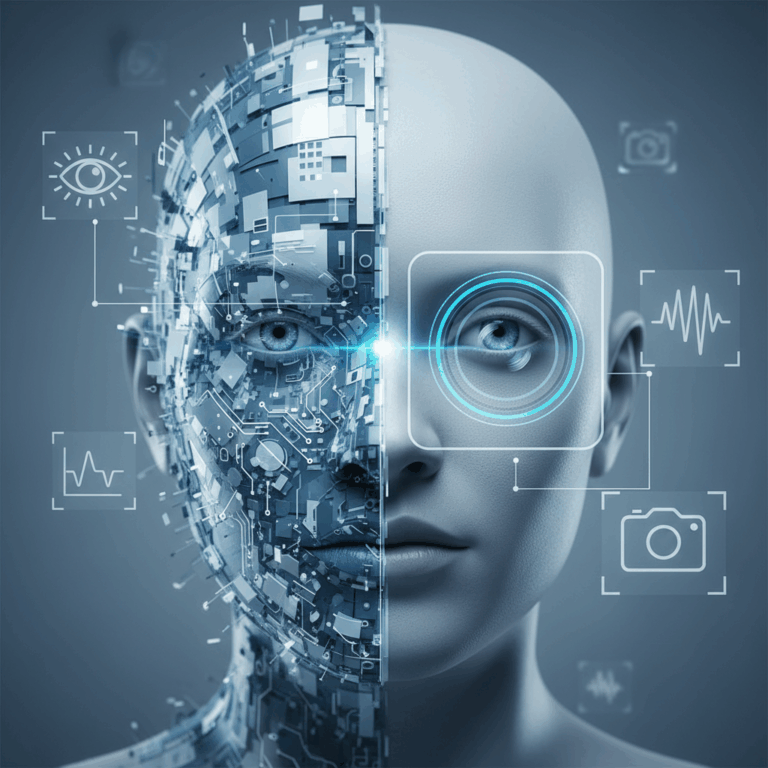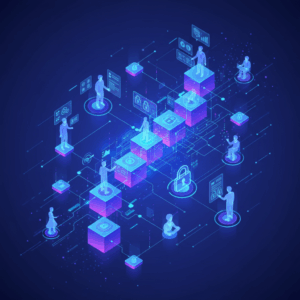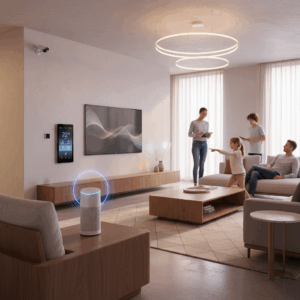Fundamentals of Computer Vision Technology
Computer vision is a key branch of artificial intelligence that allows machines to interpret and understand visual content. It processes images and videos to extract meaningful information automatically.
This technology powers numerous applications across industries, enabling smarter systems to analyze the environment and assist human decision-making in real time.
By mimicking human vision, computer vision enhances how machines perceive the world, making devices more interactive, efficient, and safe.
Definition and Purpose of Computer Vision
Computer vision enables machines to «see» by acquiring, processing, and interpreting visual input from cameras or sensors. Its goal is to replicate human vision capabilities.
The primary purpose is to convert visual data into actionable insights, supporting tasks like object identification, scene analysis, and event detection.
This technology is essential for automating visual tasks that would be impractical or slow if done manually by humans.
Core AI Techniques for Image and Video Interpretation
Deep learning algorithms, especially convolutional neural networks (CNNs), are widely used for recognizing patterns in images and videos, enabling high accuracy.
Techniques like image segmentation, feature extraction, and object detection help break down visual content into understandable components for AI systems.
These methods allow machines to perform complex interpretations, such as detecting faces, reading text, or identifying objects in dynamic scenes.
Interesting Fact
Recent advances in computer vision include transformers and self-supervised learning models, which improve performance with less labeled data, pushing the field forward.
Primary Applications of AI in Image and Video Recognition
AI-driven computer vision offers powerful tools for image and video recognition, transforming how machines interpret visual data in many fields. These applications improve accuracy and efficiency.
From security systems to healthcare diagnostics, these technologies enable automated recognition, classification, and analysis of complex visual information quickly and reliably.
By leveraging AI, computer vision systems handle tasks such as identifying faces, detecting objects, reading text, and analyzing medical imagery with growing precision.
Facial Recognition Systems
Facial recognition technology identifies or verifies individuals by analyzing facial features in images or video streams using AI algorithms. It is widely used in security and access control.
This system enhances user authentication in devices like smartphones and boosts safety in public spaces by monitoring for known threats or enabling contactless identification.
Advanced facial recognition adapts to varying lighting and angles, increasing reliability across diverse environments and applications in law enforcement and social media tagging.
Object Detection in Autonomous Vehicles
Autonomous vehicles rely on object detection to recognize pedestrians, other cars, and road signs from real-time video feeds, ensuring safe navigation and collision avoidance.
AI models process complex scenes, distinguishing between moving and static objects while predicting their behavior, which is crucial for decision-making in self-driving cars.
These systems continuously improve through data from sensors and cameras, enhancing vehicle awareness and the ability to operate smoothly in diverse traffic conditions.
Optical Character Recognition (OCR)
OCR technology converts printed or handwritten text in images into editable, searchable digital formats, streamlining data entry and document digitization processes.
It is used in numerous applications, including automating form processing, enabling real-time language translation, and extracting information from scanned receipts or street signs.
The integration of AI improves OCR accuracy on varied fonts, languages, and layouts, making it a vital tool for business automation and accessibility.
Medical Imaging Analysis
Computer vision assists doctors by analyzing medical images such as X-rays, MRIs, and CT scans to detect abnormalities, tumors, or other health conditions with high precision.
AI systems highlight critical areas, support early diagnosis, and reduce human error, contributing to faster and more accurate treatment planning in healthcare.
Ongoing advances enhance the ability to interpret complex imaging data, making medical image analysis an indispensable aid in modern diagnostics and research.
Industry-Specific Uses of Computer Vision
Computer vision technology is tailored to specific industries, offering solutions that improve efficiency and decision-making. It enables automated visual analysis for better management and operations.
By applying computer vision in different sectors, companies can monitor environments, detect anomalies, and extract actionable insights from vast visual data streams quickly.
These industry-specific applications demonstrate the versatility of computer vision, adapting to unique challenges and driving innovation across various fields.
Agriculture and Livestock Monitoring
In agriculture, computer vision monitors crop health by analyzing leaf color and texture to detect diseases or nutrient deficiencies early. This allows timely interventions to protect yields.
Livestock monitoring uses cameras combined with AI algorithms to track animal behavior, identify stressed or sick animals, and optimize feeding schedules, enhancing herd management.
This technology reduces labor costs, increases productivity, and supports sustainable farming practices by continuously collecting and analyzing visual data from fields and barns.
Retail and Customer Interaction Tracking
Retailers leverage computer vision to analyze customer movements in stores, understanding shopping behavior and optimizing store layouts to improve sales and customer experience.
AI-driven systems track product interactions and detect frequent pathways, enabling personalized marketing, inventory management, and real-time assistance through smart kiosks or apps.
Additionally, computer vision supports automated checkout processes, reducing wait times and labor demands, thus enhancing overall operational efficiency in retail environments.
Traffic and Transportation Monitoring
Computer vision is instrumental in traffic management by detecting vehicle counts, congestion, and infractions such as speeding or red-light violations through real-time video analysis.
Transportation authorities use these systems to improve safety, optimize traffic flow, and assist in urban planning by collecting accurate data on vehicle and pedestrian patterns.
Integration with smart city infrastructure ensures these computer vision applications contribute to more efficient, safer, and responsive transportation networks across metropolitan areas.
Entertainment and Manufacturing Enhancements
Computer vision is revolutionizing the fields of entertainment and manufacturing by enabling more interactive experiences and improving production quality. It uses AI to interpret visual data in real time.
This technology enhances user engagement in games and apps while automating inspection processes in factories, making these industries more efficient and innovative.
By integrating vision-based solutions, both sectors benefit from safer, faster, and more accurate operations, transforming traditional workflows.
Augmented Reality and Gesture Recognition
Augmented reality (AR) leverages computer vision to overlay digital content onto the real world by accurately tracking the environment and user gestures. This interaction boosts immersion.
Gesture recognition interprets hand and body movements as commands, enabling touchless control in gaming, education, and virtual meetings, enhancing user experiences.
These technologies combine to create intuitive interfaces, allowing users to manipulate virtual objects naturally without relying on physical controllers.
Quality Control in Manufacturing Processes
Computer vision automates quality control by inspecting products for defects during manufacturing, identifying imperfections faster than manual checks. This improves consistency.
AI systems analyze images to detect anomalies like cracks, incorrect assembly, or surface flaws, ensuring only high-quality items reach customers and reducing waste.
Deploying vision solutions speeds up inspection cycles and lowers operational costs while maintaining strict compliance with industry standards.






